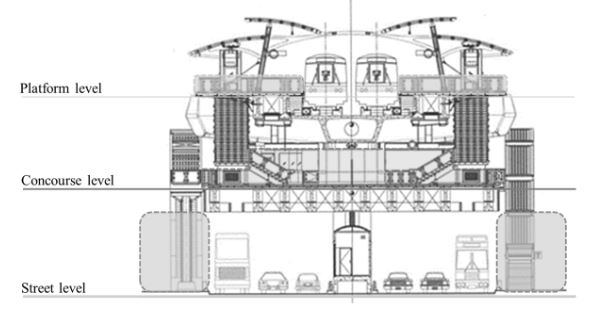Investigation on Physical Distancing Measures for COVID-19 Mitigation of Rail Operation in Bangkok, Thailand
Keywords:
COVID-19 Pandemic, metro operation, physical distancing, public transportation, risk of virus transmissionAbstract
The COVID-19 pandemic is the global health crisis and was declared a pandemic on 11th April 2020 by the World Health Organization (WHO). The most common solution is physical distancing which refers to avoiding close contact with other people by keeping a physical space between others. The COVID-19 pandemic is challenging mass transit services which are usually crowded with passengers. There is a need for an effort to save lives and stop spreading the virus, but metro transit still needs to provide services to people. Although the metro operators in Bangkok had a quick response to this pandemic by implementing physical distancing measures at stations and in passenger cars, effective levels of these measures are still under question. This study compares the physical distancing data surveyed during the COVID-19 pandemic and close contact transmission by breathing which defined the risk distance. The study investigates passenger levels of infection risk from close contact transmissions by breathing during the time at the metro station, based on the location where activities take place in metro stations: concourse level, platform level, and in the passenger car during the commute. The results show the risks of infection at metro stations and for passengers compared between the three metro operators in Bangkok city: Bangkok Mass Transit System (BTS), Metropolitan Rapid Transit (MRT), and Airport Rail Link (ARL).
Downloads
References
American Red Cross. (2020). Coronavirus – What Social Distancing Means. Retrieved from https://www.redcross.org/about-us/news-and-events/news/2020/coronavirus-what-social-distancing-means.html
Bangkok Mass Transit System PLC Ltd. (BTS). (n.d.). BTS E-Library, design principles. Retrieved from http://www.bts.co.th: https://www.bts.co.th/eng/library/system-design.html
Jones, R. (2020). Designer’s guide to COVID-19: Physical distancing. Retrieved from Architecture now: https://architecturenow.co.nz/articles/designers-guide-to-covid-19-physical-distancing/
Jung et al. (2014). Comparison of Filtration Efficiency and Pressure Drop in Anti-Yellow Sand Masks, Quarantine Masks, Medical Masks, General Masks, and Handkerchiefs. Aerosol and Air Quality Research, 14, 991-1002.
Kerkhove, M. (2020). COVID-19. World Health Organization.
Kowalski, W., & Bahnfleth, W. (1998). Airborne Respiratory Diseases and Mechanical Systems for Control of Microbes. Heat Piping Air Cond., 34-46,48.
Lancker, W., & Parolin, Z. (2020). COVID-19, school closures, and child poverty: a social crisis in the making. Lancet Public Health.
Liu, L., Li, Y., Nielsen, P.V., Wei, J., Jensen, R. L. (2016). Short-range airborne transmission of expiratory droplets between two people. Indoor Air 27, 452-462.
Mass Rapid Transit Authority of Thailand. (2020). Social Distancing in the train cabin. Retrieved from Mass Rapid Transit Authority of Thailand
Siemens AG. (n.d.). Metro System - Bangkok MRTA, Thailand: 19 Three-Car Units. Erlangen: Siemens AG.
Sound Transit. (2020). Responding to heightened COVID-19 concerns. Retrieved from Sound Transit: Retrieved from https://www.soundtransit.org/blog/platform/responding-to-heightened-covid-19-concerns
UK Department of Transport. (2020). Coronavirus (COVID-19): UK transport and travel advice. Retrieved from gov.uk: https://www.gov.uk/guidance/coronavirus-covid-19-uk-transport-and-travel-advice#public-transport--buses-rail-underground-trams-ferries
Vos, J. (2020). The effect of COVID-19 and subsequent social distancing on travel behavior. Transportation Research: Interdisciplinary Perspective.
Washington Metropolitan Area Transit Authority. (2020). Metro and Covid-19: Steps we’ve taken. Retrieved from Washington Metropolitan Area Transit Authority: Retrieved from https://www.wmata.com/service/status/details/COVID-19.cfm
Zhang, W., & Qian, B.-y. (2020). Making decisions to mitigate COVID-19 with limited knowledge. Lancet infect dis 2020.

Downloads
Published
How to Cite
Issue
Section
License
Copyright (c) 2020 International Journal of Building, Urban, Interior and Landscape Technology (BUILT)

This work is licensed under a Creative Commons Attribution-NonCommercial-NoDerivatives 4.0 International License.











